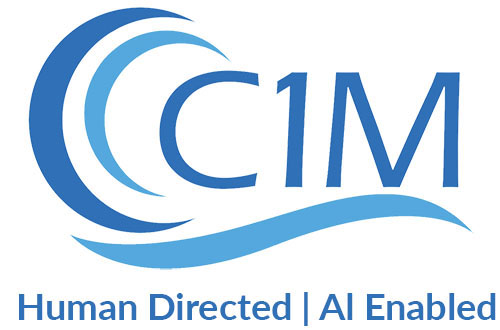
Today’s digital era has caused the medical profession to evolve by leaps and bounds. As a result, most health care systems adopt technology and innovation to enhance patient healthcare, safety, and experience. But what about adapting to the changes that the digital era has brought for patient relationships?
Let’s explore this today.
The Digital Age and Medical Practices
The American Medical Association (AMA) helps doctors adapt to the use of augmented intelligence (AI) through various initiatives:
- The AMA launched the Healthier Nation Innovation Challenges (2016)
- Doctors, residents-in-training, and medical students submitted innovative ideas on how to use technology in medical schools and how to advance digital health technology and digital medicine.
- It challenged 400 innovators in a national conference (2017)
- Pushed for modernization of the medical school curricula and training the students in the use of electronic health records and other modern approaches in the health systems.
- AMA launched the Physician Innovation Network (2017)
- Enabled physicians to connect with venture capitalists in public health and digital health companies
- Gave the doctors the chance to recommend innovations that will cater to patients’ welfare, medical care, and unique needs.
Amazing technologies improved both short term and long term care. The use of remote sensing and monitoring devices make it easy for doctors to know their patients’ status in real-time. For example, one device reads and transmits the blood sugar level of a child to his pediatrician. An insulin pump corrects the blood sugar as needed.
Telehealth and telemedicine, on the other hand, make it easy for patients to gain access to their providers. Patients can ask their provider many health-related questions using email, rather than long periods of time in a waiting room to be seen.
But now, largely due to patient online reviews and social media sharing, doctors have to be their own advocates for marketing.
The Digital Age and Patient Relationships
Besides their bedside manner in person, doctors have to practice social media/electronic manners as well to protect their online reputation. These new ways of giving care also give rise to physician ethical issues and new challenges not known in the past.
Patients used to rely solely on their doctors for disease diagnosis. But now, a few mouse clicks can reveal a number of possible causes of the patient’s symptoms.
William Osler, Father of Modern Medicine, once said, “Listen to your patient. He is telling you the diagnosis.” However, some patients have taken this in the literal and skewed way with the advent of the internet.
Many have access to health information anytime and anywhere using their mobile devices.
Consider these survey findings of the Pew Research Center in the last decade:
- 81% of Americans own smartphones
- 59% of adults get their health information online
- 17% of adults with chronic diseases received conflicting information online
This trend can sometimes give rise to an artificial patient relationship that’s one-sided. Because of this, the doctor-patient relationship may appear to have started even before the patient walks into the doctor’s consultation room.
When patients read the provider’s website, they may feel an instant connection with the doctor upon reading his profile. They may have graduated from the same college or share the same hobby or interest. If the doctor has an engaging blog and vlog, the patient may immediately trust the doctor’s authority based on the information he provides.
And yet, all these remain to be a one-way patient experience until the patient walks in and shakes the doctor’s hand.
How can you, as a provider, jump into this trending digital healthcare boat without falling into the deep sea of ethical issues and challenges?
Make Sure Ethics Are at the Forefront of Your Patient Relationships
Make sure to review the AMA Code of Medical Ethics on Patient and Physician Relationships.
It is every physician’s ethical responsibility to abide by the following principles even when going digital:
- The relationship between patient and physician is based on trust.
- Have a trusted website with reliable and relevant online content, with material that has references and credible sources
- Use plain language easily understood by a layman,
- Never commit false claims, nor disclose any conflict of interest
- Always have the patient’s interest above everything else.
- Use marketing strategies that add value to your patient’s healthcare
- Educate patients based on your expertise and best clinical judgment
- Be a patient advocate in whatever platform you use
- Email to inform and not spam your patients’ inboxes
According to AMA, doctors can uphold physicians’ ethical responsibility in giving telehealth service by:
- Putting patient welfare first
- Providing competent care
- Sharing objective and accurate information that the patient needs to make an informed decision (including those that appear on their websites)
- Upholding patient privacy and confidentiality using appropriate electronic protocol
- Ensuring continuity of care
- Telling patients the extent and limitations of the service.
- Directing patients to their primary care physicians or other specialists for follow-up care
Google and the Self-Diagnosis
Here are some things to keep in mind when dealing with patients who had consulted “Dr. Google” before they sought your “second” opinion:
According to a study, online pre-consulting resulted in the following outcomes on the doctor-patient relationship:
- 40% of the patients remained unaffected
- 24% of the patients deem that it improved
- 8% felt that online research resulted in a negative impact
When did the health information seeking behavior improve the doctor-physician relationship? It was only when the:
- information confirmed the doctor’s findings and supported the doctor’s advice
- doctor was able to explain the online information better and added to patient understanding
- patient felt more in control because of prior knowledge
- online information gave more clarity to the options presented by the doctor
- online information engaged the patient with their self-care
The negative impact occurred when conflict arose between the patient and the doctor due to the:
- Contradicting interpretation of the healthcare information
- Patient putting more value on the online information than his doctor’s prescription
- doctor feeling threatened or challenged
- doctor not being receptive and resisting discussion on the online information
Today’s doctor-patient relationship relies on trust, which gives rise to compliance and adherence to the doctor’s medical intervention, just as before. But unlike before, the nurturing of such trust can extend beyond the clinic through the digital world wide web.
If you have not gone with the latest digital trend in your practice, now is the time to innovate. Maximize the use of technology to acquire new patients and to nurture lasting doctor-patient relationships.
What about digital marketing? We can help your practice find more qualified patients! Schedule a call with us here to find out how.
References
https://www.ama-assn.org/delivering-care/ethics/use-remote-sensing-monitoring-devices
https://www.ama-assn.org/delivering-care/ethics/ethical-practice-telemedicine
https://www.pewinternet.org/fact-sheet/mobile/
https://www.pewinternet.org/2010/03/24/health-information/
https://www.ncbi.nlm.nih.gov/pmc/articles/PMC5290294/
https://www.ama-assn.org/delivering-care/ethics/using-wikipedia-medical-research-what-watch
https://www.ama-assn.org/delivering-care/ethics/patient-physician-relationships


